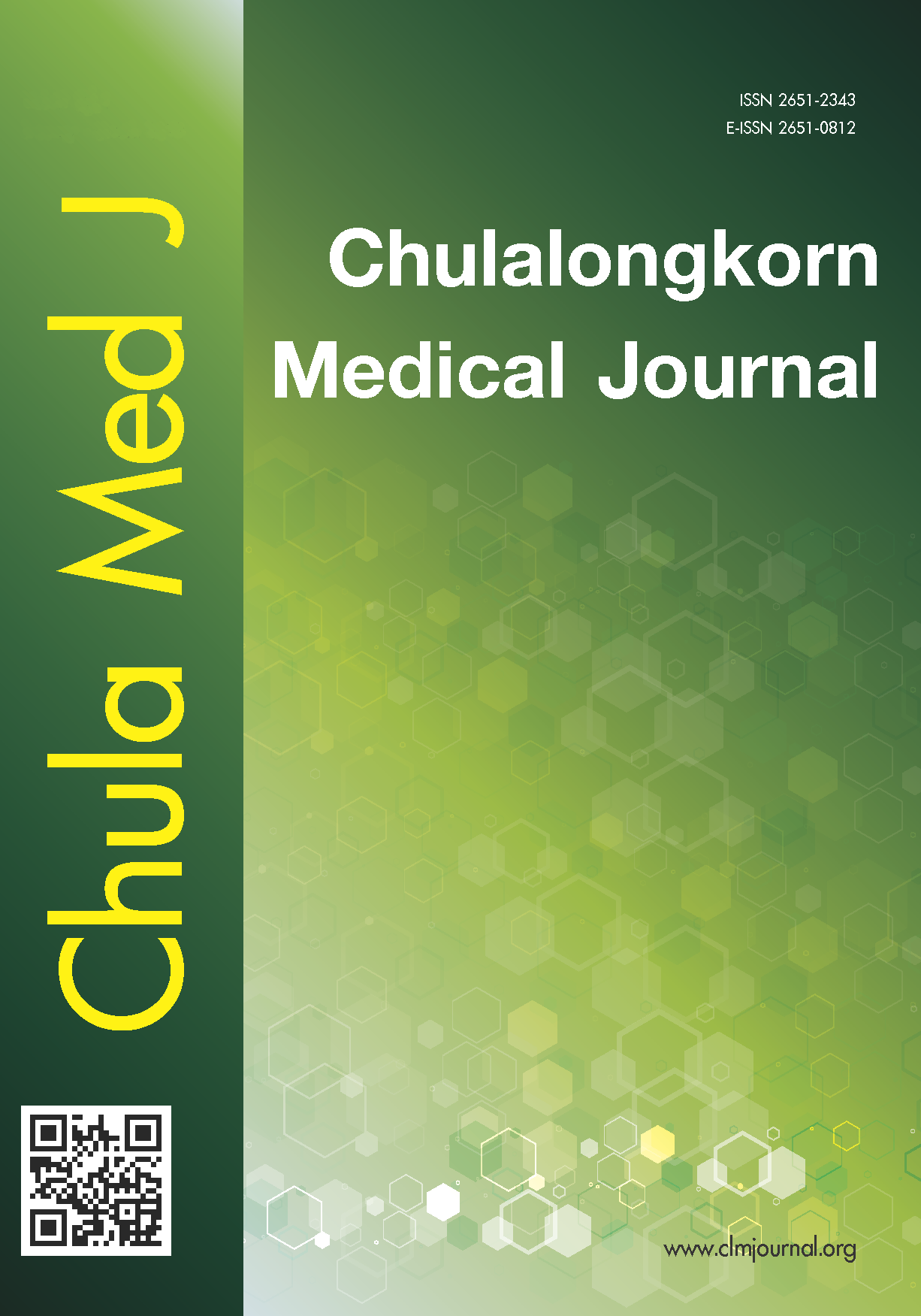Cytotoxicity and apoptotic mechanisms of different solvent extracts from Ipomoea pes-caprae on human nasopharyngeal cells
Main Article Content
Abstract
Background: Ipomoea pes-caprae serves as a valuable medicinal plant with pharmacological activities including antioxidant, analgesic, anti-inflammatory, antispasmodic, and anticancer activities. Although some scientific literatures have demonstrated its anticancer activities, the exact mechanism has not been fully elucidated.
Objectives: To study the cytotoxicity and apoptotic mechanisms of different solvent extracts from Ipomoea
pes-caprae on human nasopharyngeal (KB) cells.
Methods: The dried plant was macerated in hexane (Hex) or ethanol: water (EtOH). The supercritical fluid
extraction process used carbon dioxide (SCO2) as the extracting solvent. Cytotoxic activity was determined by
MTT assay. The apoptotic mechanism and its effect on mitochondrial membrane potential was measured by
DNA agarose gel electrophoresis, nuclear staining with DAPI, JC-1 mitochondria staining and caspase-3
activity analysis.
Results: EtOH extraction did not exhibit a cytotoxic effect on peripheral blood mononuclear or KB cells. The IC50 values ofHex, SCO2 extract and doxorubicin were found to be 200 12.3, 70
4.2 and 2.0
0.08
g/mL, respectively. Morphological changes including cell shrinkage, DNA fragmentation and condensation of chromosomes were observed. Further, Hex, SCO2 extract induced loss of mitochondrial membrane potential and induction of caspase-3 activity.
Conclusions: The results strongly supported the ability of these extracts to induce the KB cell apoptosis through the mitochondrial and caspase-3 pathway. The presence of various bioactive compounds in the Ipomoea pes-caprae may be a valid strategy for chemoprevention and chemosensitization.
